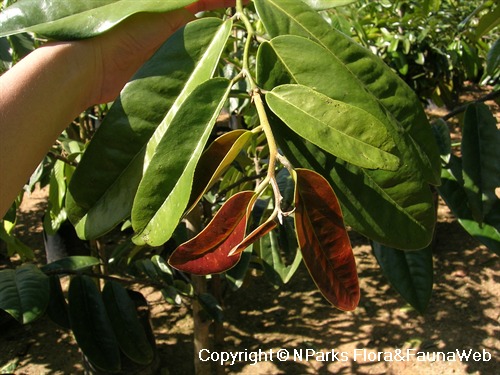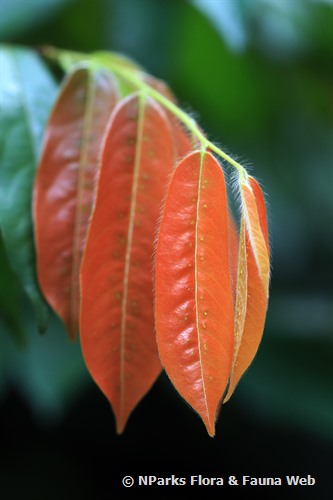_lowres.jpg)
Back
Diospyros malabarica (Desr.) Kostel.
| Family Name: | Ebenaceae |
| Common Name: | Ebony, Kayu Arang, Kumoi |
Diospyros malabarica is a tree with black bark and fruit that is edible when ripe. Found naturally in rainforests along the riverbanks and streams, it thrives in cultivation when grown under full sunlight and fertile, well-drained soil.
Name
Classifications and Characteristics
| Plant Division | Angiosperms (Flowering Seed Plants) (Dicotyledon) |
|---|---|
| Plant Growth Form | Tree |
| Lifespan (in Singapore) | Perennial |
| Mode of Nutrition | Autotrophic |
| Maximum Height | 15 m |
Biogeography
| Native Distribution | India, Cambodia, Laos, Myanmar, Thailand, Peninsular Malaysia, Indonesia. |
|---|---|
| Native Habitat | Terrestrial |
| Preferred Climate Zone | Tropical |
| Local Conservation Status | Non-native (Horticultural / Cultivated Only) |
Description and Ethnobotany
| Growth Form | It is a tree, up to 15 m tall with black bark. |
|---|---|
| Foliage | Leaves are oblanceolate to oblong, measuring 10 – 30 cm long and 2.5 – 8 cm wide, and in alternate arrangement. Tertiary veins are net-like (reticulate) and prominent on the upper surface. The petiole is 1 – 1.5 cm long. |
| Flowers | Flowers are unisexual and joined at base. Both male and female flowers are urn-shaped (urceolate) or ovoid, with calyx lobes present. Male flower has stamens while female flower has ovoid ovary and staminodes. |
| Fruit | Fruit is round, measuring 2.5 – 4 cm in long and 2.5 – 5 cm wide, fleshy, with triangular calyx lobes. It is densely hairy at first and gradually becoming glabrous as it matures. |
| Habitat | It is found in rainforests, along the riverbanks and streams, up to 300 m altitude. |
| Cultivation | It can be propagated by seed. |
| Etymology | The genus epithet comprises of two parts. dios, in Greek, means god while puros, in Greek, means wheat or fruit, which refers to the edible persimmon fruit in the genus. The specific epithet refers to Malabar, India. |
| Ethnobotanical Uses | Edible Plant Parts : Edible Fruits Food (Fruit or Vegetable): Ripe fruit is edible and eaten by local villages in its native distribution. Timber & Products: The wood is used by villagers for building boats and simple constructions. Others: Unripe fruit is used to dye cloth black and for tanning nets. The tree also produces a gum, which is used for caulking boats and as an adhesive. |
Landscaping Features
| Landscape Uses | General, Parks & Gardens |
|---|
Fauna, Pollination and Dispersal
| Pollination Method(s) | Biotic (Fauna) |
|---|---|
| Seed or Spore Dispersal | Biotic (Fauna) |
Plant Care and Propagation
| Light Preference | Full Sun |
|---|---|
| Water Preference | Moderate Water |
| Plant Growth Rate | Moderate |
| Rootzone Tolerance | Moist Soils, Well-Drained Soils, Fertile Loamy Soils |
| Propagation Method | Seed |
Foliar
| Mature Foliage Colour(s) | Green |
|---|---|
| Foliar Type | Simple / Unifoliate |
| Foliar Arrangement Along Stem | Alternate |
| Foliar Attachment to Stem | Petiolate |
| Foliar Shape(s) | |
| Foliar Margin | Entire |
| Leaf Area Index (LAI) for Green Plot Ratio | 4.0 (Tree - Dense Canopy) |
Floral (Angiosperm)
| Flower & Plant Sexuality | Unisexual Flowers |
| Individual Flower Shape | Urceolate / Urn-shaped |
|---|
Fruit, Seed and Spore
| Fruit Classification | Simple Fruit |
|---|---|
| Fruit Type | Fleshy Fruit |
References
| References | <1> de Kok, R.P.J. & Puglisi, C. (2023). Ebenaceae. In: Kiew, R. et. al. (eds) Flora of Peninsular Malaysia. Malayan Forest Records No. 49. Series II: Seed Plants, vol. 10, 308pp. Selangor: Forest Research Institute Malaysia. <2> Lemmens, R.H.M.J., Soerianegara, I., and Wong, W.C. (Editors). 1995. Plant Resources of South-East Asia Volume 5 (2). Timber Trees: Minor commercial timbers. Indonesia: Prosea Foundation. 655 pages. <3> Phengklai, C. (1981). Ebenaceae. In: Smitinand, T. & Larsen, K. (eds) Flora of Thailand, vol 2, part 4, pp. 281–391. Bangkok: The TISTR Press. |
|---|
Image Repository
Others
| Master ID | 1560 |
|---|---|
| Species ID | 2853 |
| Flora Disclaimer | The information in this website has been compiled from reliable sources, such as reference works on medicinal plants. It is not a substitute for medical advice or treatment and NParks does not purport to provide any medical advice. Readers should always consult his/her physician before using or consuming a plant for medicinal purposes. |

_lowres.jpg)
_lowres.jpg)
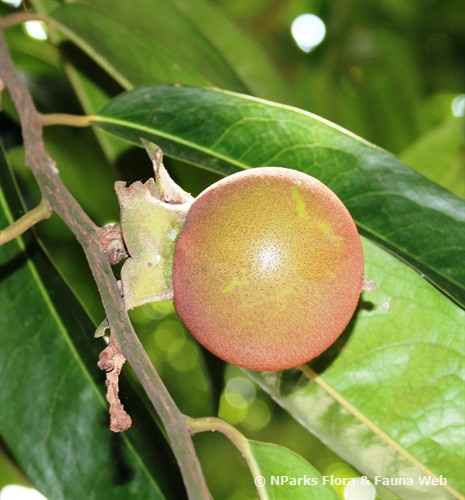
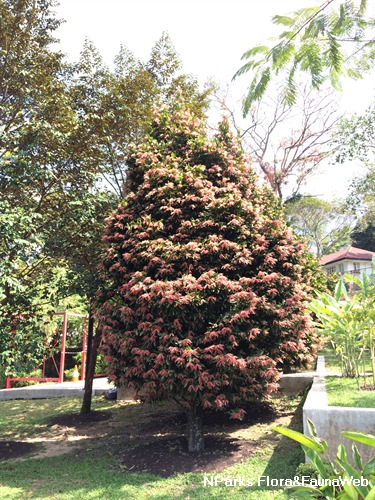
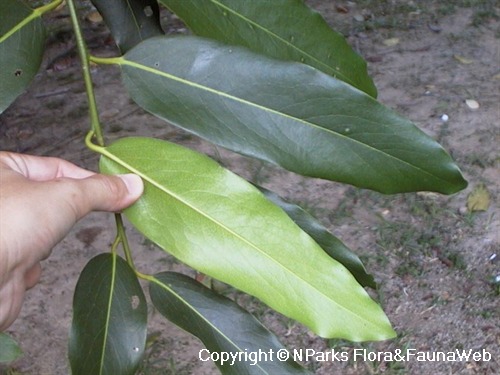
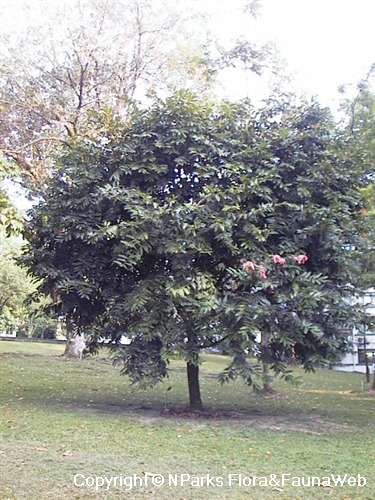

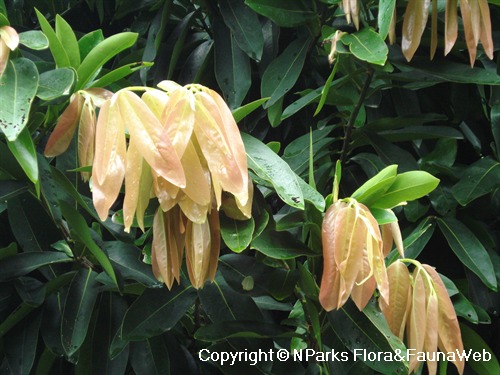

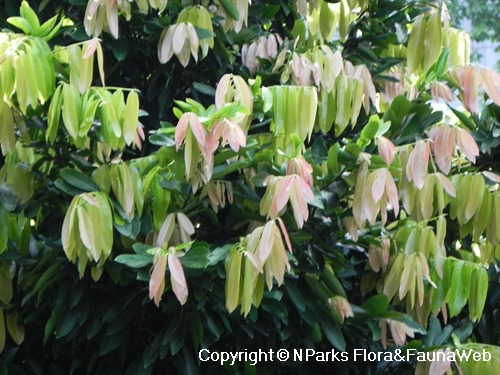
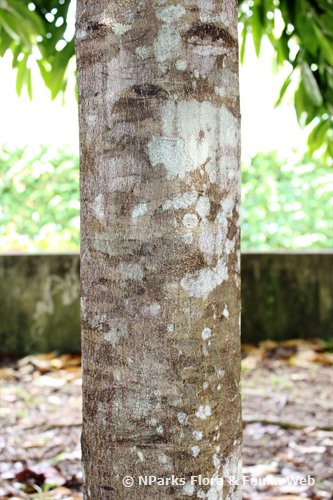
_lowres.jpg)
_lowres.jpg)
_lowres.jpg)
_lowres.jpg)
